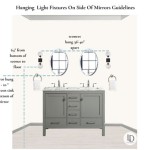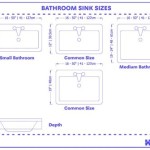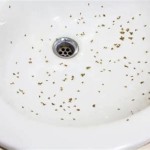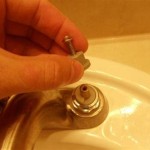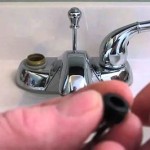Should a Bathroom Vanity be Painted? A Comprehensive Guide
The decision to paint a bathroom vanity is a multifaceted one, involving considerations of aesthetics, functionality, durability, and cost. While a fresh coat of paint can revitalize a dated or worn vanity, it’s essential to understand the potential drawbacks and necessary preparation to ensure a successful and long-lasting result. This article aims to provide a detailed examination of the factors involved in deciding whether or not to paint a bathroom vanity, equipping individuals with the knowledge necessary to make an informed choice.
A bathroom vanity often serves as a focal point in the room. It integrates storage solutions, complements the sink and countertop, and contributes significantly to the overall style and atmosphere of the space. Over time, vanities can become worn, stained, or simply out of sync with evolving design preferences. Rather than replacing the entire unit, which can be a costly and disruptive undertaking, painting presents a potentially more economical and less invasive alternative.
However, painting a bathroom vanity is not a simple case of applying paint directly to the surface. The bathroom environment presents unique challenges, including high humidity and frequent exposure to water. These conditions can compromise the adhesion and longevity of the paint if proper preparation and application techniques are not followed. Furthermore, the existing material and finish of the vanity will significantly influence the required preparation steps and the type of paint that will yield the best results.
Evaluating the Condition and Material of the Vanity
Before considering paint colors or finishes, a thorough assessment of the vanity's current condition and material composition is crucial. This evaluation will determine the extent of necessary preparation and the selection of appropriate painting products. Factors to consider include:
Material: Bathroom vanities are commonly constructed from wood (solid or engineered), laminate, metal, or a combination of these materials. Solid wood vanities, while often more durable, may be susceptible to warping or cracking due to moisture exposure. Engineered wood products, such as MDF (Medium-Density Fiberboard), are more dimensionally stable but can be damaged by prolonged water contact. Laminate vanities present a smooth, non-porous surface that requires specialized primers and paints to ensure proper adhesion. Metal vanities, typically powder-coated, may require sanding and priming to create a suitable surface for painting.
Existing Finish: The existing finish on the vanity will influence the required preparation steps. Vanities with a glossy or slick finish will require thorough sanding to create a keyed surface for the primer to adhere to. Peeling or cracked paint will need to be removed before proceeding with any further preparation. Oil-based paints require specific preparation, often involving deglossing and priming with a compatible product.
Damage: Carefully inspect the vanity for any existing damage, such as scratches, dents, water stains, or mold growth. Scratches and dents can be filled with wood filler or body filler, depending on the extent of the damage. Water stains may require cleaning with a bleach solution or specialized stain remover. Mold growth should be addressed immediately with a mold-killing solution before proceeding with any painting.
Hardware: The existing hardware, including knobs, pulls, and hinges, should be assessed. If the hardware is in good condition and matches the desired aesthetic, it can be carefully removed and reinstalled after painting. If the hardware is outdated or damaged, it may be necessary to replace it. Consider the spacing of the existing hardware when selecting replacement options to avoid the need for drilling new holes.
The outcome of this evaluation will dictate the necessary preparation steps. For example, a solid wood vanity with a glossy finish will likely require sanding, priming, and multiple coats of paint. A laminate vanity, on the other hand, will necessitate a specialized primer designed for non-porous surfaces. Ignoring these crucial preparatory steps can result in peeling paint, poor adhesion, and an unsatisfactory final result.
Preparation: The Key to a Durable Finish
Proper preparation is arguably the most critical aspect of painting a bathroom vanity. It creates a stable and receptive surface for the paint to adhere to, ensuring a durable and long-lasting finish. Neglecting this stage can lead to paint failure, regardless of the quality of the paint used.
The preparation process typically involves the following steps:
Cleaning: Thoroughly clean the vanity with a degreasing cleaner to remove any dirt, grease, or soap scum. This is essential for ensuring proper adhesion of the primer and paint. Rinse the vanity with clean water and allow it to dry completely.
Sanding: Sanding creates a keyed surface that allows the primer to adhere more effectively. Use a medium-grit sandpaper (around 120-grit) to scuff sand the entire surface of the vanity. For glossy finishes, use a coarser grit sandpaper (around 80-grit) to remove the sheen. Pay particular attention to edges and corners. After sanding, remove all sanding dust with a tack cloth or vacuum cleaner.
Repairing: Fill any scratches, dents, or holes with wood filler or body filler, depending on the severity of the damage. Allow the filler to dry completely according to the manufacturer's instructions. Sand the filler smooth and flush with the surrounding surface.
Priming: Applying a primer is essential for several reasons. It seals the surface, provides a uniform base for the paint, and enhances adhesion. For bare wood, use a stain-blocking primer to prevent tannins from bleeding through the paint. For laminate surfaces, use a specialized bonding primer designed for non-porous materials. Apply the primer in thin, even coats, allowing it to dry completely between coats. Sand lightly between coats for a smoother finish.
Caulking: Apply a bead of caulk along any seams or joints to prevent water from seeping in and causing damage. Use a paintable caulk and smooth it with a damp cloth or sponge.
The amount of time and effort invested in the preparation stage will directly correlate to the quality and durability of the finished product. Rushing through this process can compromise the entire project, leading to costly repairs or the need to completely redo the painting.
Selecting the Right Paint and Application Techniques
Once the vanity has been properly prepared, the next step is to select the appropriate paint and application techniques. The choice of paint will depend on several factors, including the desired finish, durability requirements, and the existing material of the vanity.
Paint Types:
Acrylic Latex Paint: Acrylic latex paint is a popular choice for bathroom vanities due to its durability, ease of application, and low odor. It provides a hard, washable finish that is resistant to mildew and moisture. Choose a paint with a sheen level that is appropriate for a bathroom environment, such as satin or semi-gloss.
Oil-Based Paint: Oil-based paint offers excellent durability and a smooth, glossy finish. However, it has a longer drying time, a stronger odor, and requires more effort to clean up. Oil-based paint is also more prone to yellowing over time. Due to these factors, acrylic latex paint is generally preferred for bathroom vanities.
Epoxy Paint: Epoxy paint provides an exceptionally durable and water-resistant finish. It is often used in demanding environments where resistance to chemicals and abrasion is required. However, epoxy paint can be more difficult to apply and may require specialized equipment.
Application Techniques:
Brushing: Brushing is a common method for applying paint to bathroom vanities. Use a high-quality brush designed for the type of paint being used. Apply the paint in thin, even strokes, following the grain of the wood. Avoid applying too much paint at once, as this can lead to drips and runs.
Rolling: Rolling can be used to apply paint to larger, flat surfaces. Use a small, high-density foam roller for a smooth finish. Apply the paint in thin, even coats, overlapping each stroke slightly. Avoid applying too much pressure to the roller, as this can create an uneven finish.
Spraying: Spraying provides the most uniform and professional-looking finish. However, it requires specialized equipment and a well-ventilated workspace. Use a paint sprayer designed for the type of paint being used. Apply the paint in thin, even coats, overlapping each stroke slightly. Be sure to mask off any areas that you don't want to be painted.
Regardless of the application method chosen, it is essential to apply multiple thin coats of paint rather than one thick coat. This will result in a more durable and even finish. Allow each coat of paint to dry completely according to the manufacturer's instructions before applying the next coat. Lightly sand between coats for a smoother finish.
In addition to the type of paint and application method, the color and sheen level of the paint should also be carefully considered. Lighter colors can make a small bathroom appear larger and brighter. Higher sheen levels, such as semi-gloss, are more durable and easier to clean but can also highlight imperfections in the surface. Ultimately, the choice of color and sheen level will depend on personal preferences and the overall design aesthetic of the bathroom.
By carefully evaluating the condition and material of the vanity, thoroughly preparing the surface, and selecting the appropriate paint and application techniques, individuals can successfully paint their bathroom vanities and achieve a durable and aesthetically pleasing result. However, it is crucial to remember that painting a bathroom vanity is a time-consuming and labor-intensive project. Individuals who lack the necessary skills or experience may want to consider hiring a professional painter to ensure a successful outcome.
.jpg?strip=all)
Painting A Bathroom Vanity Again Dream Green Diy

How To Paint Bathroom Cabinets Secrets For A Perfect Finish

I Painted Our Wooden Bathroom Vanity What Learned Diy Tips Before Afters

Step By Guide How To Paint A Bathroom Vanity Cabinet Love Grows Wild
.jpg?strip=all)
Painting A Bathroom Vanity Again Dream Green Diy

Transform Your Bathroom Vanity In A Weekend Making Pretty Spaces Blog

Diy Perfectly Painted Bathroom Cabinets In A Day

Diy Bathroom Cabinet Painting How To Quickly Accomplish Your Makeover

Painted Bathroom Vanity Michigan House Update Liz Marie Blog

Painted Bathroom Vanity One Room Challenge Week 3
Related Posts
